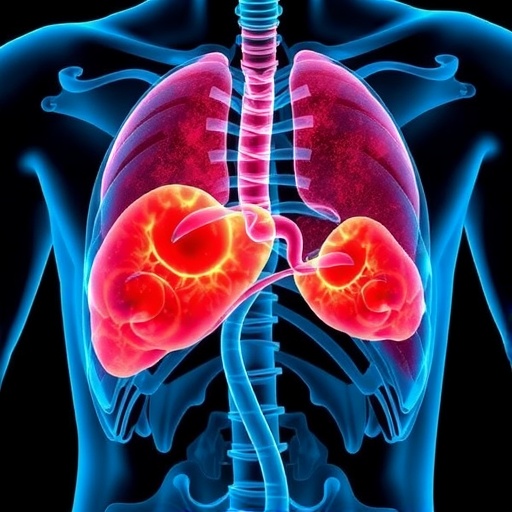Vancouver, BC – A pan-Canadian team of cancer researchers has developed a predictive model for detecting early-stage lung cancer in high-risk individuals with significantly greater accuracy than other leading models. This Terry Fox Research Institute study suggests the team's innovative approach could be considered for use in lung cancer screening programs both in Canada and around the world.
The results, highlighted in a study published in the Oct. 18th edition of The Lancet Oncology, were presented at the 18th World Conference on Lung Cancer in Yokohama, Japan on Wednesday by co-principal investigator Dr. Stephen Lam (chair of British Columbia's Provincial Lung Tumour Group at the BC Cancer Agency and a professor of medicine at the University of British Columbia).
"We knew our Pan Can Lung Cancer Risk Prediction Model would probably work better than other models, but we were surprised at how much better," says Dr. Lam. "We have the means to identify high-risk people, and we know we can find cancer early. This model provides a superior tool that would be beneficial in Canada and around the world in saving more lives."
The Pan Can Lung Cancer Risk Prediction Model – which is used to determine which individual should undergo annual CT screening to detect early-stage lung cancer – outperformed comparable models such as The National Lung Screening Trial (led by the National Cancer Institute in the US). The Pan Can Model was developed with $8.4-million support from the Terry Fox Research Institute (TFRI), and The Canadian Partnership Against Cancer. Ottawa resident Debi Lascelle took part in the Terry Fox Research Institute study, and credits the early-detection protocol with catching her cancer while it was still curable. "Being involved in this study quite literally saved my life," said Lascelle, who had a 13-milimetre tumour removed from her right lung through surgery and has been cancer-free ever since. "How do you adequately find a way to say, 'Thank you for my life'? It's been seven years and I still haven't found a way."
The PanCan Model diagnosed lung cancer in 6.5 per cent of people screened with a follow-up of five years, compared to the four per cent of cases found by the National Lung Screening Trial over a longer term (6.5 years). Further, 77 per cent of the lung tumours diagnosed with the Pan Can Model were caught in early-stages when the cancer is potentially curable, compared to 57 per cent in the NLST study. Lung cancer is the most common cause of cancer death around the world – yet if caught early enough it can be cured in 70 per cent of cases, making early detection a critical feature in a predictive model.
Currently, both the US and Canadian lung cancer screening guidelines are based on age and smoking history. One of the main advantages of the Pan Can Model is it uses a risk prediction tool that looks at numerous additional variables: sex, family history of lung cancer, chronic obstructive pulmonary disease, educational level and body mass index.
"Looking at just age and smoking history is actually a very inaccurate way of doing things, because we know that age and smoking history alone finds 33 per cent fewer people with lung cancer than the PanCan prediction tool," adds Dr. Lam. The TFRI Pan-Canadian Early Lung Cancer Detection Study was expanded in 2017 to examine factors such as genetics and air pollution in lung cancer risk. The study is looking to recruit 2,000 British Columbians who have smoked for at least 20 years and are between 55 and 80. Dr. Victor Ling, president and scientific director of The Terry Fox Research Institute, says The Lancet Oncology study results epitomize the type of cutting-edge, precision medicine TFRI strives to fund across Canada. "The Terry Fox Research Institute is thrilled at the success of the Pan Can Lung Cancer Risk Prediction Model," remarks Dr. Ling. "The paper's recommendations have the opportunity to better detect this deadly disease in high-risk individuals. We believe this research holds great promise for providing improved outcomes for lung cancer patients both within Canada and around the world."
###
Original article from The Lancet Oncology: Participant selection for lung cancer screening by risk modelling (the Pan-Canadian Early Detection of Lung Cancer [PanCan] study): a single-arm, prospective study
Link (active Oct. 18): http://www.thelancet.com/journals/lanonc/article/PIIS1470-2045(17)30597-1/fulltext?elsca1=tlxpr
For more information, or to schedule an interview with any of the institutional leads, please contact:
TFRI:
Katelyn Verstraten
604-675-8000 ext. 7630
[email protected]
Kelly Curwin
604-675-8223
778-237-8158 (cell)
[email protected]
About The Terry Fox Research Institute (TFRI) Launched in October 2007, The Terry Fox Research Institute is the brainchild of The Terry Fox Foundation and today functions as its research arm. TFRI seeks to improve significantly the outcomes of cancer research for the patient through a highly collaborative, team-oriented, milestone-based approach to research that will enable discoveries to translate quickly into practical solutions for cancer patients worldwide. TFRI collaborates with more than 70 cancer hospitals and research organizations across Canada. TFRI headquarters are in Vancouver, B.C. http://www.tfri.ca
Media Contact
Katelyn Verstraten
[email protected]
604-675-8000 x7630
http://www.tfri.ca/home.asp
http://dx.doi.org/10.1016/S1470-2045




